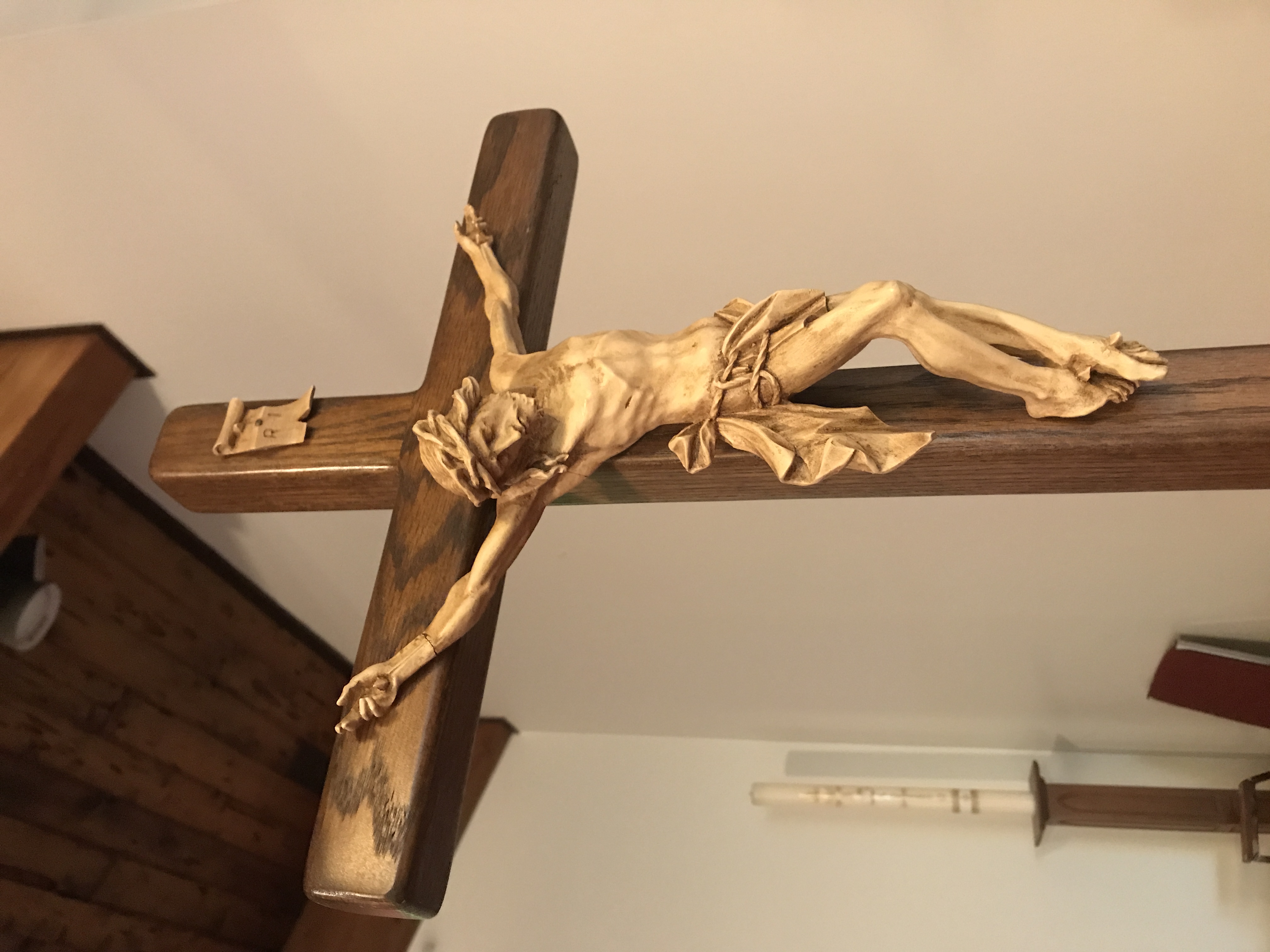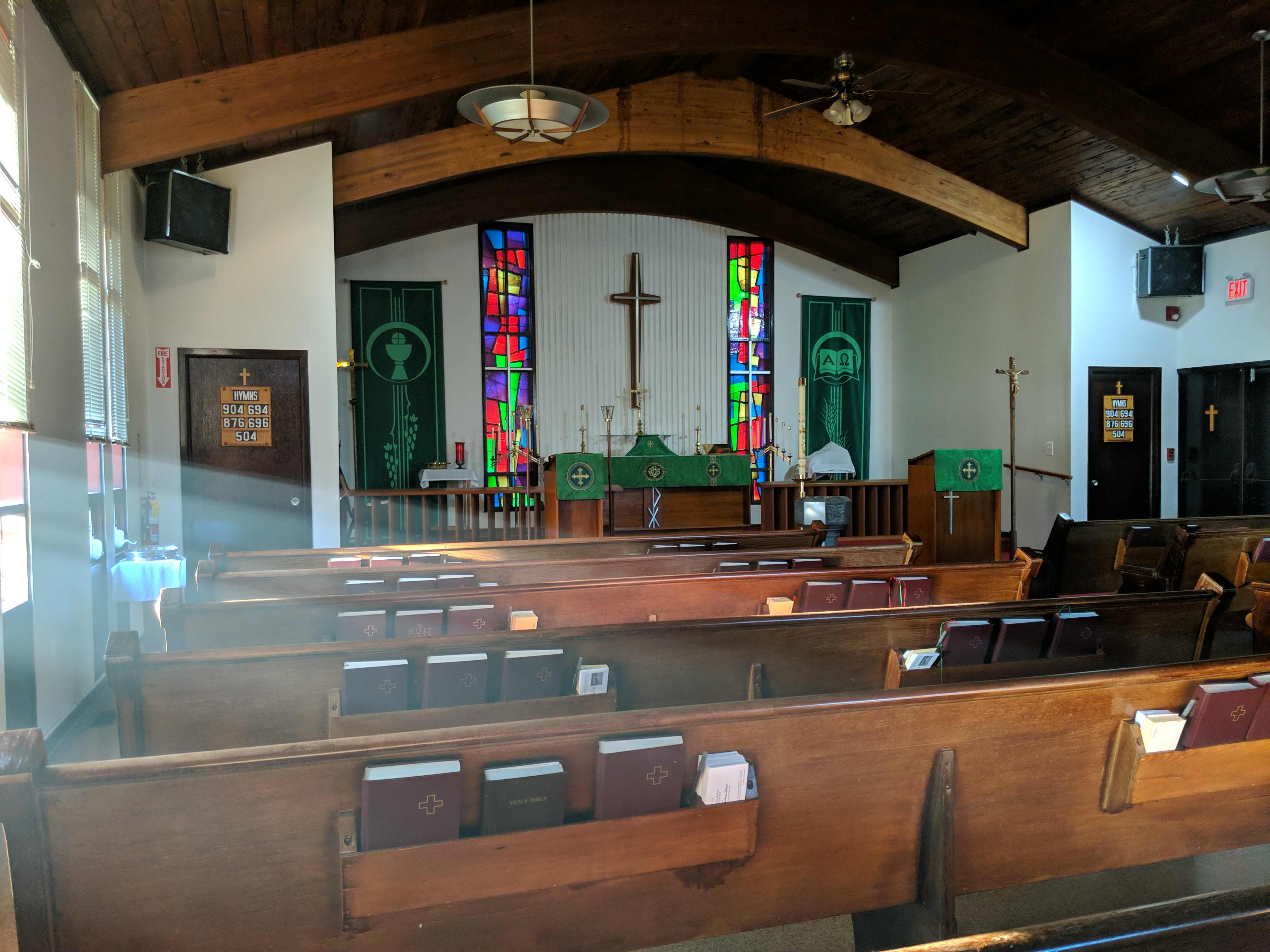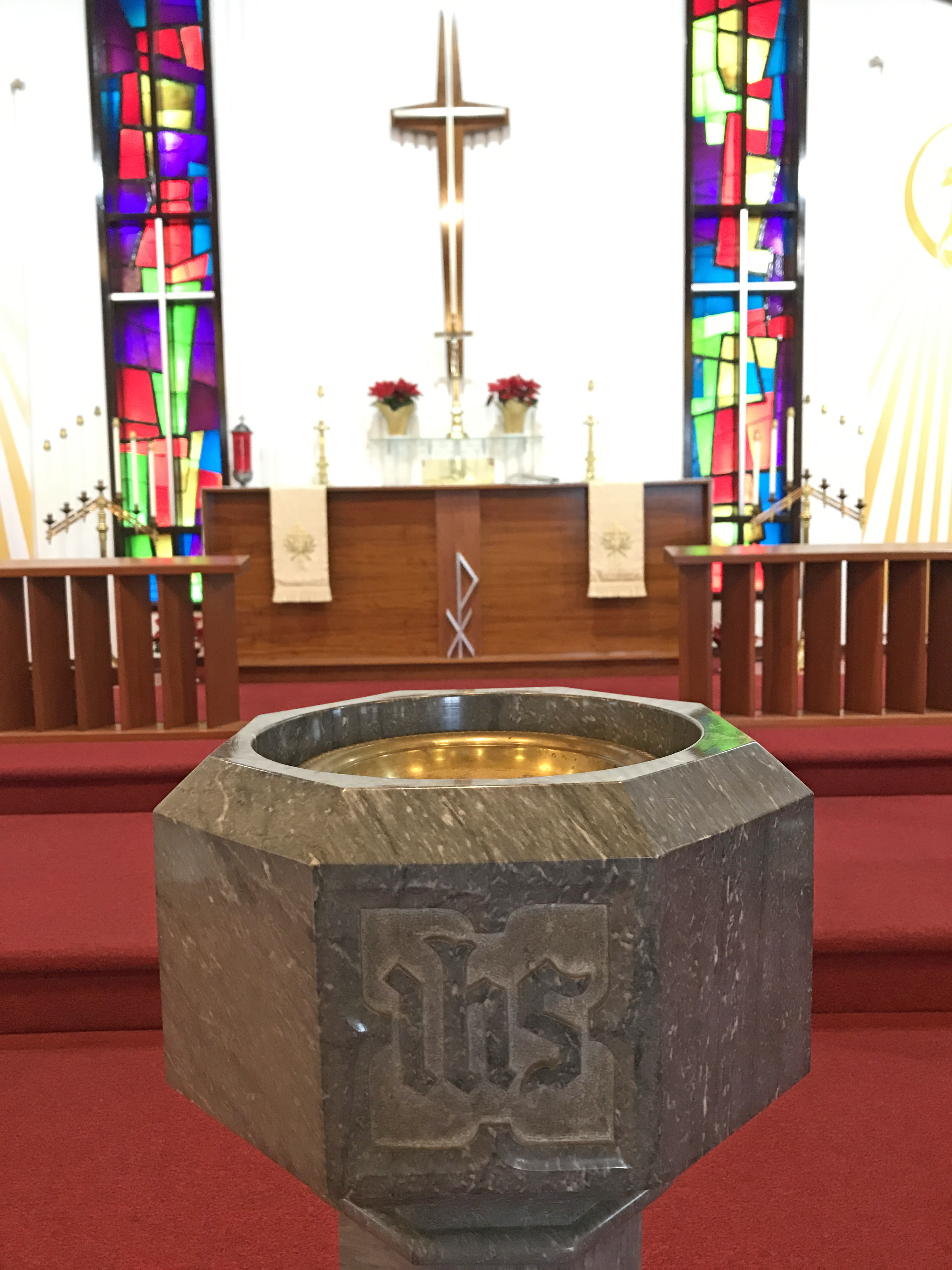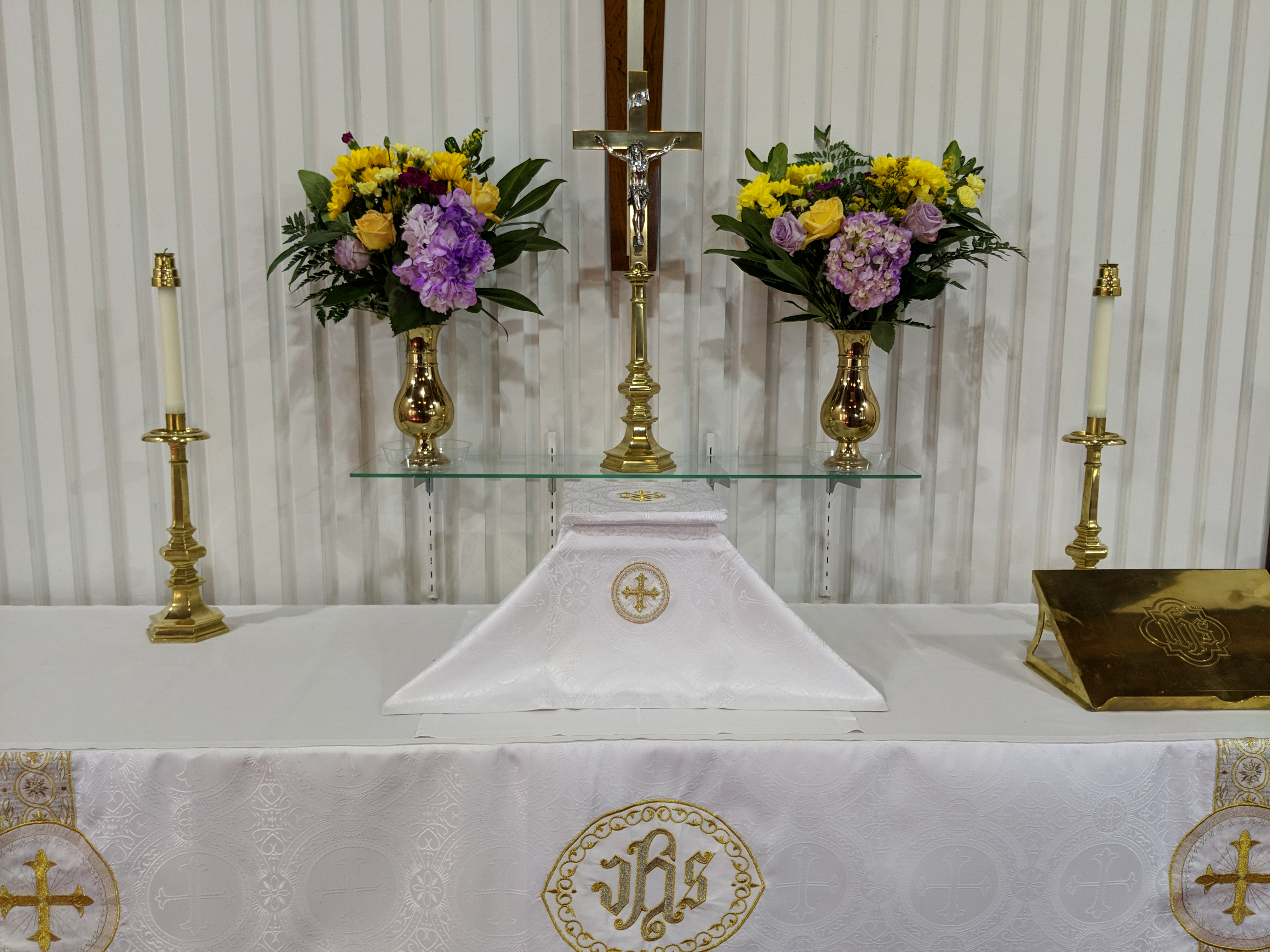✠ Psalmody: Wisdom 18:14–15a;Psalm 93:1a, b;45:2a, 1;93:1a, b;93:1b–2;St. Matthew 2:20
✠ Lection: Jeremiah 31:31-34;Galatians 4:1–7;St. Luke 2:33-40
In the Name of the Father and of the ✠ Son and of the Holy Spirit. Amen.
As if the holiday season stretching from Thanksgiving through the New Year isn’t active enough with the number of things we pack into our personal lives with parties, family gatherings, shopping, cooking, and napping, the calendar of the Church also allows us a ton of observances itself. There’s the usual addition of a mid-week Advent services. Then, there’s Christmas Eve with the possibility of two services on that same day: The Service of Lessons and Carols or Vespers in the afternoon or evening, then a midnight Christmas Eve mass, which has been the Christian Church’s tradition for many a century. It is a very historic practice to have a vigil on the night before a great feast day of the Church, the most famous of which, and still most widely observed, is the Vigil of Easter. But our Christian heritage has also joyously celebrated vigils on the nights before Epiphany, Pentecost, and Christmas. It sounds extra busy, but better than any negative impact, such a Church-, or Christ-, centered schedule is extra blessing and faith nourishment. Such practices enrich our faith, because as believers, we cannot get too much of God even if we came to Church everyday…which also was a practice in days of old.
But in 2024, our Christmas Day has passed and now with us on the fifth day of Christmas, the Church has remembered St. Stephen the martyr on the December 26th, St. John the Apostle and Evangelist on the 27th, and the Slaughter of the Holy Innocents on the 28th. And within the next week or so come the Church’s remembrances of the Circumcision and Holy Name of Jesus on January 1st and the Epiphany of Our Lord on the 6th. Let not this long list rekindle or add to the anxiety you may have experienced over the past days and weeks. These are all priceless feasts and there’s an aspect of the historic Church calendar that could be confusing at times like today if you were to follow in sequence what we’re observing in 2024.
Very few times does our calendar follow the chronological order of events as they happened some 2,000 years ago. Specifically, consider Christmas and what follows. All of the specific dates of the feasts and festivals of this time of year, like the Nativity on the 25th, St. Stephen, St. John, and so on, are, and always will be, date specific. We remember those events on those specific dates because there is historic reason. The Church has been confident that Jesus was born on, or closely around, December 25th. Therefore, saints have committed that date for the celebration of the birth of our Savior in Bethlehem and to this day even pagans benefit from the choice. With that date set, that means that on the 8th day after His birth, the Church would naturally remember the glorious event of the Christ Child being circumcised in accordance with the law He gave to Abraham and then to have the heavenly name Jesus officially placed upon Him. Therefore, the Church will always remember January 1st for the Circumcision and Holy Name of Jesus.
What all this list that I just dumped onto you boils down to is that there are essentially two Church calendars woven into one. In one thread are the Sundays of the Church Year that follow broad-perspective themes of the Kingdom of God. They are not tied to specific dates, but are seasons of the year and their use in our days of the Church Age is to guide our central, weekly worship on Sundays as the cyclical worship of the Church prepares us for the unending bliss to come. Then, scattered among the grand theme are all the dates throughout the year that mark specific moments in time, specific days on which special events being celebrated actually happened in the past, such as December 25th. Yet, the two threads intersect at the most important moments of time. The Sunday following the Passover will always be the day that the Church celebrates the Lord Jesus rising from His day of rest in the grave, rising after three days in the tomb, rising after dying on the cross to redeem us.
Everything and everyway that we celebrate now revolves around those three days in history. On Good Friday, He Who became flesh and dwelt among us, He by Whom and through Whom all things were made, He Who is fully God and fully Man gave up the Spirit and breathed His last, at least but for a time. He was put into the fresh tomb of Joseph of Arimathea, and on Sunday, the third day, He rose again according to the Scriptures. Therefore, our Sundays, even this first one right after Christmas, are built always with His death and resurrection in mind because those are why we now have life. It’s why the first Sunday in Advent, the very first Sunday in the Church year, plants us, from the beginning, firmly at the entrance to Jerusalem where the Son of David entered into the final events leading, not just to His birth, but to His death.
So, while the details of specific event dates being observed versus the over-arching theme work of the Church’s Sundays can become quite daunting when we become burdened by the details, knowing this framework helps us on days like the First Sunday after Christmas. It helps us because today we hear about something that happened 40 days after the first Christmas, meaning don’t get caught up in the chronology. Hear what the Lord is saying by the events and through them.
Our fathers in the faith, who worked so masterfully at crafting our church calendar and lectionary, chose Luke 2:33-40 to be read every First Sunday after Christmas for a thematic reason; for a reason tied to the season of Christmas while more so heavily tied to the overarching narrative of the Scriptures, namely the story of Christ, as they all testify about Him. Thus, we dig into what was happening in the life of Christ in our gospel text, and in this case, what was being said in the words of Simeon, because it had been revealed to him by the Holy Spirit that he would not see death before he had seen the Lord’s Christ.
Then Simeon blessed them, and said to Mary His mother, “Behold, this Child is destined for the fall and rising of many in Israel…” To reduce the Scriptures simply to the idea of good news is to strip it of the true good news of Christ because the mind of sinful man always defaults to its own deceived idea of self-centered good news that is void of repentance, suffering, and the like. The lack of suffering isn’t life-giving good news. The ease of suffering-free days isn’t life-giving good news. A stretch of good happenings or circumstances just going well for us isn’t life-giving good news. Earthly and temporal prosperity isn’t life-giving good news. There is only one Gospel, and only it is life-giving good news. But, in order for the news of the coming of Christ into the world to be good, to be of eternal significance, to be a relief of the wrath under which all of us sinners are born, we must first see how we fall under the law before rising again in Christ. We either fall in this way, which is the death of the Old Adam within us that then leads to being raised to life in Christ, or we fall in disbelief, never to be raised out of death for all eternity. It is by Christ that the thoughts of the heart are revealed; either revealed in faith in order that the mourning over sin is consoled by the sweet words of Christ’s forgiveness; or revealed in unbelief, seeing ourselves as not that bad, that if anyone deserves to get into heaven, it’s ourselves, or even worse, believing that we have no need of a Savior, no need of the Virgin Birth, no need of the fall and rising found only in Jesus.
Simeon’s words bless Mary with certainty as they do you today, this first Sunday after Christmas in the year of our Lord 2024. May you be blessed in heart and soul with the truth that in the helpless infant Jesus, in His humility only able to be carried to the temple by His parents, is indeed the One Who is your salvation. In His incarnation, you have the necessary fall of your unholy flesh as it stands in comparison to His unblemished Person; and you have the rising that He gives to as may as receive Him. See how the Church year woven into our calendar measure of time is built upon the foundation of the Holy Scriptures and their proclamation of the Christ Who takes away the sin of the world. It is because our calendar depends upon the Church’s that you regularly receive the gifts the Christ Child brings; a true treasure of good news. Rescued from your condemning sin only by this Child Who grew to die for your life are you able to depart in peace from church today and are you able to depart in peace from this life into the next. For in the Church, and in her observance of days until He comes again in glory, arriving there your ears will have heard, your eyes will have seen, and your tongues will have tasted the Lord’s salvation, Who is Christ the Lord.
In ✠ Jesus’ Name. Amen.















Comments are closed, but trackbacks and pingbacks are open.